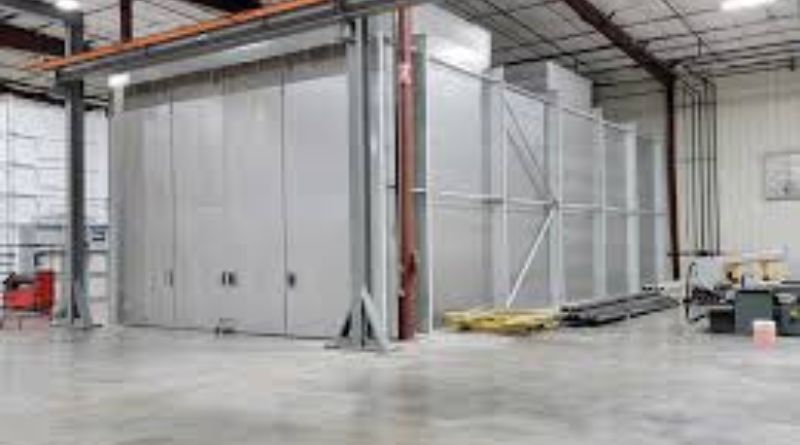The Powder Coating Oven’s Role in Achieving Mil Thickness Consistency
Powder coating is a process that ensures surfaces are evenly coated and protected, and achieving consistent mil thickness is key to its success. The powder coating oven plays a significant role in this process. It’s not just about heating—it’s about creating a precise environment where the powder melts and cures uniformly. From heat distribution to airflow, the oven’s role in maintaining consistency across the board is essential. Let’s break down how these ovens help achieve that perfect coating thickness.
Regulating Heat Distribution for Uniform Film Build
One of the most important functions of powder coating ovens is regulating heat distribution. The goal is to ensure that heat is evenly spread across the entire surface of the coated object. When heat isn’t distributed properly, some areas may not reach the right temperature, leading to uneven film build and inconsistent thickness.
Powder coating ovens are designed to maintain uniform temperatures across all parts of the object being coated. This prevents hotspots or cold zones that could cause variations in the way the powder cures. By evenly distributing heat, the oven helps the powder melt and adhere uniformly, creating a smooth and consistent coating thickness. This is especially important for parts with complex shapes where uneven heat could lead to poor coating quality.
Controlling Cure Time to Prevent Over-Thickness
The curing process in powder coating is where the magic happens. When the powder melts and solidifies, it creates a protective layer. However, if this process is not controlled properly, the coating can end up being too thick, which might cause problems such as cracking or peeling.
The powder coating oven plays a vital role in controlling the cure time. By ensuring that the object is exposed to heat for just the right amount of time, the oven helps prevent the coating from becoming too thick. If the object stays in the oven for too long, the powder may over-melt, leading to an unwanted buildup of material.
Precision Airflow for Even Powder Deposition Across Surfaces
Airflow inside a powder coating oven is another crucial element that affects the final mil thickness. Without proper airflow, the powder might not evenly coat the surface of the object, leading to patches of over-thickness or thin spots.
Precision airflow ensures that the powder is evenly distributed before the curing process begins. Modern powder coating ovens come with highly controlled airflow systems that help ensure the powder reaches every part of the surface. The airflow also prevents the powder from accumulating in certain areas, which can lead to uneven coating thickness.
For objects with intricate designs or hard-to-reach surfaces, this aspect of the oven’s design is critical. It ensures that even the smallest or most complicated parts of the object are coated evenly, maintaining consistent thickness across the entire surface.
Maintaining Consistent Oven Temperatures to Avoid Variability
Temperature consistency is another major factor when it comes to powder coating ovens. Any fluctuation in temperature during the curing process can lead to inconsistencies in the coating’s mil thickness. If the oven’s temperature drops, the powder may not fully cure, resulting in a weak or uneven coating. On the other hand, too much heat can cause over-thickness.
Powder coating ovens are designed to maintain a steady temperature throughout the entire curing process. High-quality ovens often feature advanced temperature controls that allow operators to set and monitor the oven’s heat closely. This level of control ensures that the powder cures at the exact right temperature, leading to a consistent and durable coating.
Synchronizing Conveyor Speed with Coating Application Rates
In large-scale powder coating operations, conveyor systems are often used to move parts through the oven. The speed at which the conveyor moves plays a huge role in determining the final thickness of the coating. If the conveyor moves too quickly, the parts may not spend enough time in the oven, leading to under-cured coatings. Conversely, if the conveyor moves too slowly, the coating may become too thick.
Synchronizing conveyor speed with the coating application rate ensures that the parts receive just the right amount of heat for the correct amount of time. This balance is crucial for achieving consistent mil thickness. Powder coating ovens used in conjunction with conveyor systems are designed to coordinate these factors, ensuring that every part is exposed to the right conditions.
Fine-Tuning Infrared Heat for Targeted Thickness Control
Infrared (IR) heating is a popular option in powder coating ovens, especially when precise control over coating thickness is required. IR heat allows for targeted heating of specific areas, which is particularly useful for parts with varying thicknesses or complex shapes.
By fine-tuning the infrared heat, operators can ensure that the powder coating cures evenly across the entire surface. IR heat can be directed to specific zones that need a bit more attention, helping to achieve a uniform coating thickness even on difficult parts.




